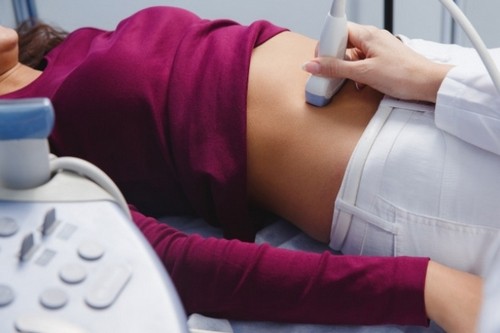Treating biliary tract diseases may require a procedure called retrograde cholangiopancreatography (ERCP). During ERCP, a gastroenterologist uses an endoscope to look for blockages in the bile ducts. Then, with instruments inserted through the endoscope, he can remove any obstruction (for example, by removing a stone or installing a stent).
As in most cases, the treatment of the disease will depend on the specific diagnosis of each person and the stage of progression. The sooner problems are discovered, the better.
Minor and early stages of liver disease can be solved by changing lifestyle: giving up alcohol, switching to proper nutrition. More advanced and serious liver and biliary tract diseases may require surgery, transplantation, medication, and other treatments.
For the treatment of gallstones (the most common manifestation of gallbladder disease), as a rule, there are three treatment options:
- “Waiting and watching.”
- Surgery to remove the gallbladder (often performed laparoscopically).
- Medications (bile acid tablets that break gallstones).
Be sure to consult a doctor if you experience the symptoms listed above. In the end, timely treatment of gallbladder disease or liver disease is the best way to prevent complications and quickly return to a healthy life.
In order not to miss the first signs of the disease and consult a doctor in time, pay attention to the symptoms listed below. Fast and high-quality treatment increases the chances of a full recovery and prevents the occurrence of complications.
Causes of disorders of the hepatobiliary system
Factors contributing to the development of violations can be:
- hereditary predisposition;
- poor nutrition;
- metabolic disorders;
- infectious and inflammatory processes;
- parasitic infestations.
In a healthy person, metabolic products (bilirubin), excess cholesterol are naturally excreted from the body, the digestion, digestion and absorption of fats normally go through. But in case of violations of the excretory function, the physicochemical properties of bile change, and it acquires lithogenic properties, that is, the ability to form stones (calculi) in the gallbladder and bile ducts.
Along with the danger of stone formation, with a violation of the excretory function of the liver, disorders of digestion and absorption of food occur. This is due to a violation of the processes of emulsification of fats, the formation of micelles and a decrease in the activity of digestive enzymes. As a result, less unsaturated fatty acids, necessary for building phospholipids of cell membranes, enter the body; absorption disorders of vitamins A, E, D, and K arise. As a result of these changes, disorders of the intestinal motor function occur – the tone decreases and peristalsis weakens.
What are the signs and symptoms of liver disease?
For most healthy people, the liver is just one of many organs that work without our participation. However, this powerful organ is responsible for digesting food and removing toxic substances from the body. The liver also helps repel infections and stores energy, which makes it extremely important for many aspects of health.
When this vital organ starts to malfunction, focusing on liver health can become a matter of life and death. There are many different types of liver diseases, but without treatment they can all be dangerous and potentially fatal.
Given the severity of possible liver diseases and complications of liver failure, it is important to be able to recognize the warning signs of the body, indicating that something is wrong.
According to the Mayo Clinic, signs and symptoms of liver disease may include:
- Yellowish appearance of the skin and eyes (jaundice).
- Chronic or excessive tiredness.
- Abdominal pain and swelling.
- Swelling in the legs and ankles.
- Itchy skin.
- Dark color of urine.
- The stool is pale, or bloody, tarry stools.
- Nausea or vomiting.
- Loss of appetite.
What are the signs and symptoms of gallbladder disease?
The most common symptom of gallbladder disease is biliary colic, which is an intense dull pain in the upper abdomen that occurs as a result of the gallstone entering the bile duct. Biliary colic often (but not always) appears as a result of eating fatty foods and is episodic in nature, that is, the pain comes and goes.

In addition to gallstone attack, other types of gallbladder disease (such as cholecystitis, biliary dyskinesia, and common gallbladder cancer) can cause abdominal pain, but other symptoms are often present. For example, pain with cholecystitis is usually accompanied by fever and an increased number of white blood cells.
In addition to abdominal pain, other potential symptoms of gallbladder disease include:
- Jaundice.
- Nausea and / or vomiting.
- Fatigue.
- Fever.
- Itching
- Bloating.
What are the signs and symptoms of bile duct disease?
Symptoms of malfunctioning of the bile duct can be sharp and serious (for example, when gallstone blocks the entire drainage system at once). Or they may appear slowly, many years after the onset of inflammation of the bile ducts. Diseases of the bile duct often cause symptoms associated with the entry of liver products into the bloodstream. Other symptoms result from the inability of the bile ducts to deliver certain digestive juices (bile) to the intestines, inhibiting the absorption of certain fats and vitamins.
Symptoms of bile duct obstruction include:
- Yellowing of the skin (jaundice) or eyes from an accumulation of waste called bilirubin.
- Itching (not limited to one area, may worsen at night or in hot climates).
- Light brown urine.
- Fatigue.
- Weight loss.
- Fever.
- Abdominal pain, especially common on the right under the chest.
- Greasy or clay stool.
- Decreased appetite.



